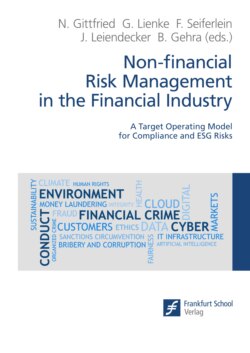Читать книгу Non-financial Risk Management in the Financial Industry - Группа авторов - Страница 7
На сайте Литреса книга снята с продажи.
1.1 New risks and challenges
ОглавлениеInstitutions face non-financial risks across a range of activities: from onboarding clients to running IT systems and carrying out daily operations. Amid a continuous flow of new risks, failures in these areas can have significant economic and reputational consequences, both for the institutions as well as their executives. Globally, compliance issues led to 394 billion in fines during the years 2011 to 2020, including 50 billion in 2018, 2019 and 2020 alone.[1] In response, financial institutions have dramatically enhanced their oversight capabilities, leading to a proliferation of risk managers, internal auditors, control specialists and compliance officers, each with their own unique backgrounds, perspectives and skill sets.
These teams of experts have tended to focus on specific areas, leading to the evolution of siloed and fragmented processes, the disjointed nature of which has itself become an operational risk. A lack of coordination has created gaps, overlaps and mismatches in the three lines of defence (3LoD) framework at most institutions. Risk functions today often produce different risk reports that apply different methodologies to analyse and quantify risk, making it difficult for executives to put risk categories into proportion and arrive at accurate implications for overall risk management. This comes on top of existing complexity: global financial organisations need to orchestrate separate product divisions, infrastructure functions (including risk management) and geographical regions, representing a range of legal entities in local jurisdictions as well as regulators and regulatory systems and requirements in multiple jurisdictions. At the same time, they need to weave in effective and efficient measures to manage non-financial risks. The challenges are significant, suggesting that a holistic, structured approach is critical.
